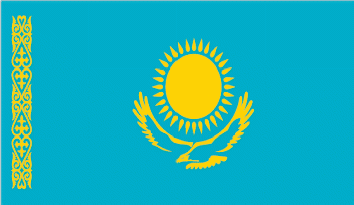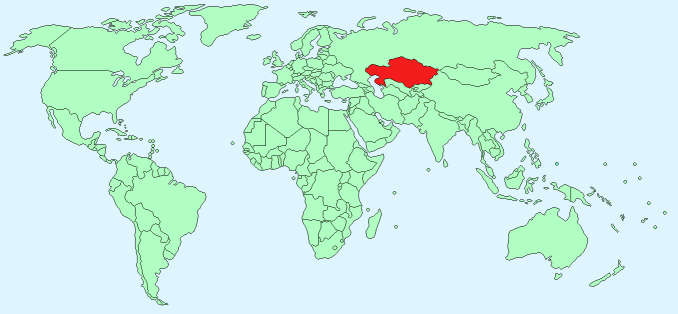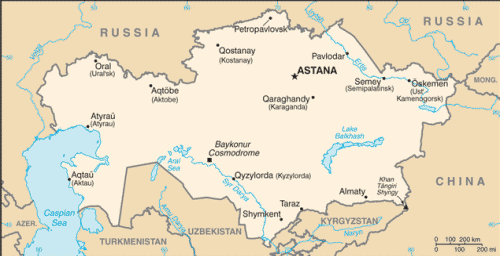Kazakhstan


Continent – Asia
Region – Central Asia
Size – 2,724,900 km²
Geography – mostly steppes with desert in the south
Language – Kazakh 64%, Russian 95%
Religion – Muslim 70%, Christianity 26%, other 4%
Monetary Unit – Kazakhstani tenge
Natural Resources – petroleum, natural gas, coal, iron ore, manganese, chrome ore, nickel, cobalt, copper, molybdenum, lead, zinc, bauxite, gold, uranium
Agriculture – spring wheat, barley, potatoes, vegetables, melons, livestock
Industry – agricultural machinery, electric motors, construction materials, processing plants for natural resources

Neighbouring Countries – Russia, China, Kyrgyzstan, Uzbekistan, Turkmenistan
Population – 17,948,816 (2014 estimate)
Population Growth Rate – 1.17%
Average Life Expectancy – 70.24
Capital City – Astana (835,153)
Highest Mountain – Khan Tangiri Shyngy (6,995m)
Longest River – Irtysh (4,441 km)
Climate – Continental – Hot summers 18°C to 30°C, cold winters – -3°C to -40°C
Yearly Rainfall – 10 cm (approx) in desert areas and 35 cm (approx) in steppes
Plant Life – steppe vegetation, Shrenkii tulips, Scotch pines, aspen, birch, white poplar, olive, bird cherry and willow trees.
Animal Life – wolf, moose, wild boar, roe deer, lynx, polecats, weasels, foxes, badger, pine marten and ermine, hares, ground squirrels, jerboa, marmots, hedgehogs, hamsters, mice, and voles
Bird Life – 513 species including steppe eagle, hobby, grebe, booby, cormorant, heron, stork, ducks, geese and swans
Harvard Reference for this page:
Heather Y Wheeler. (2015). Kazakhstan. Available: https://www.naturalhistoryonthenet.com/Facts_Figures/Country_Facts/Kazakhstan.htm. Last accessed Monday, July 18, 2016
Facts and Figures Pages
